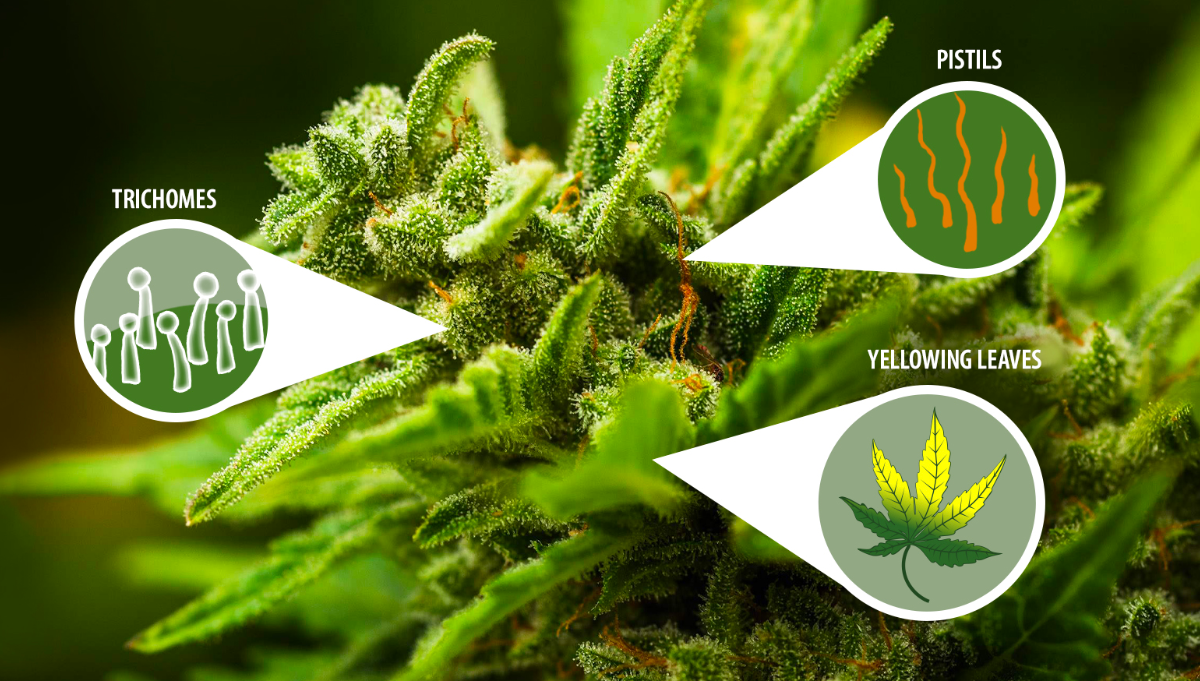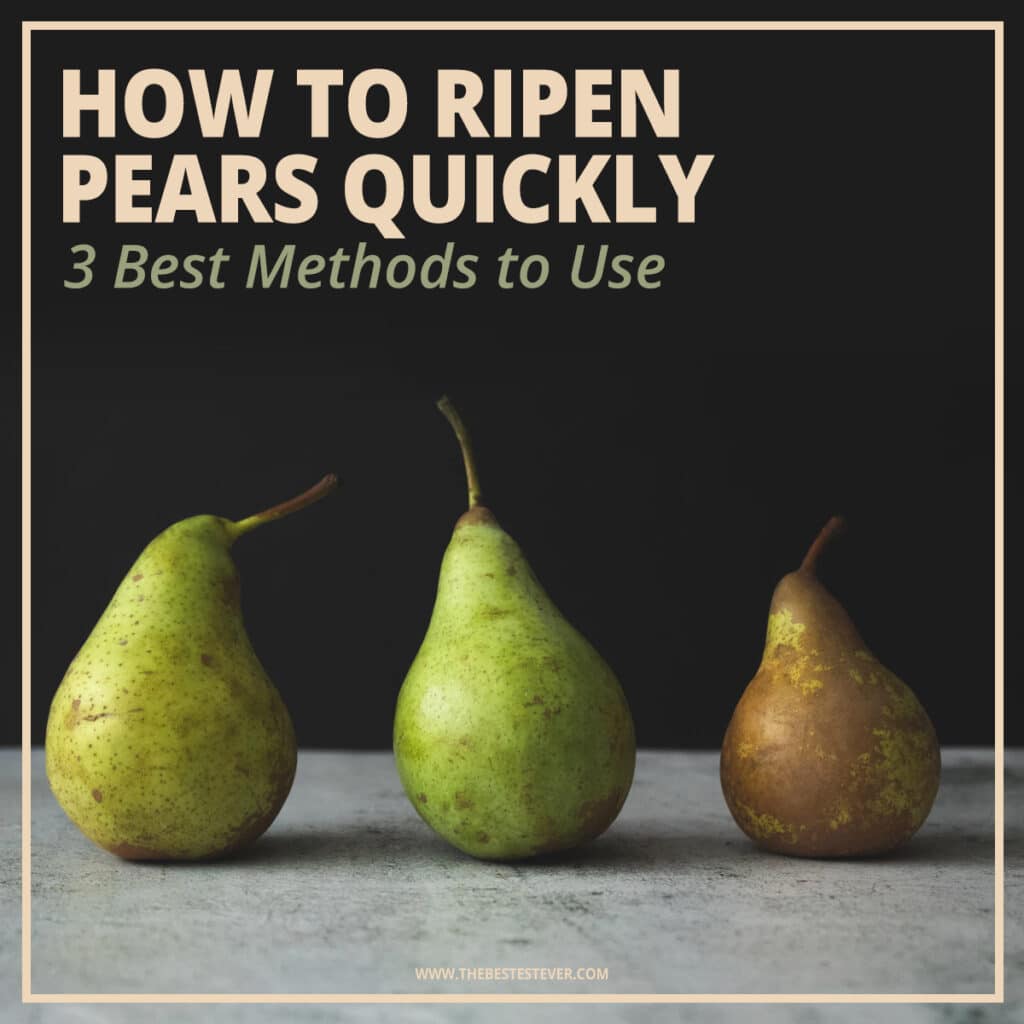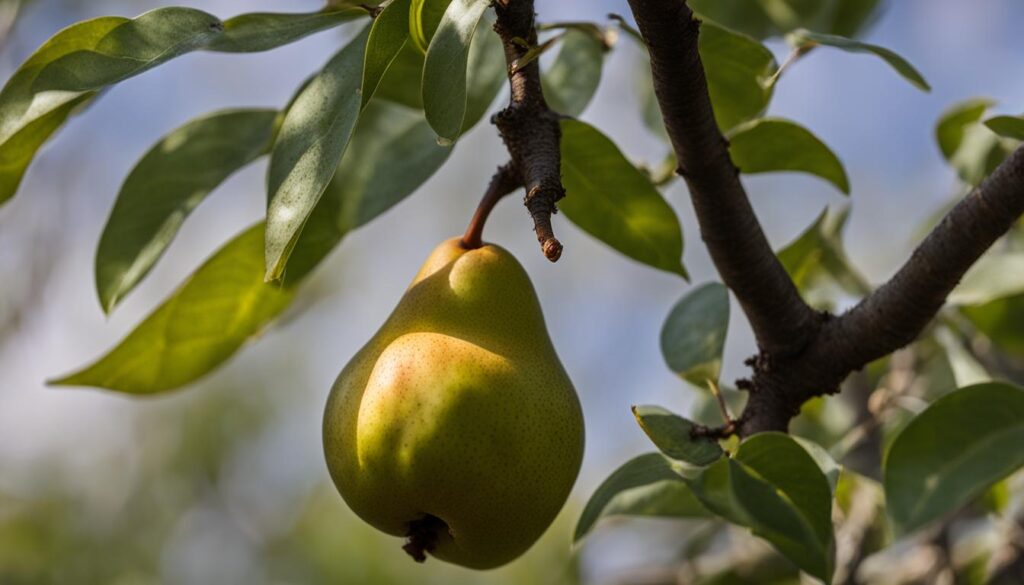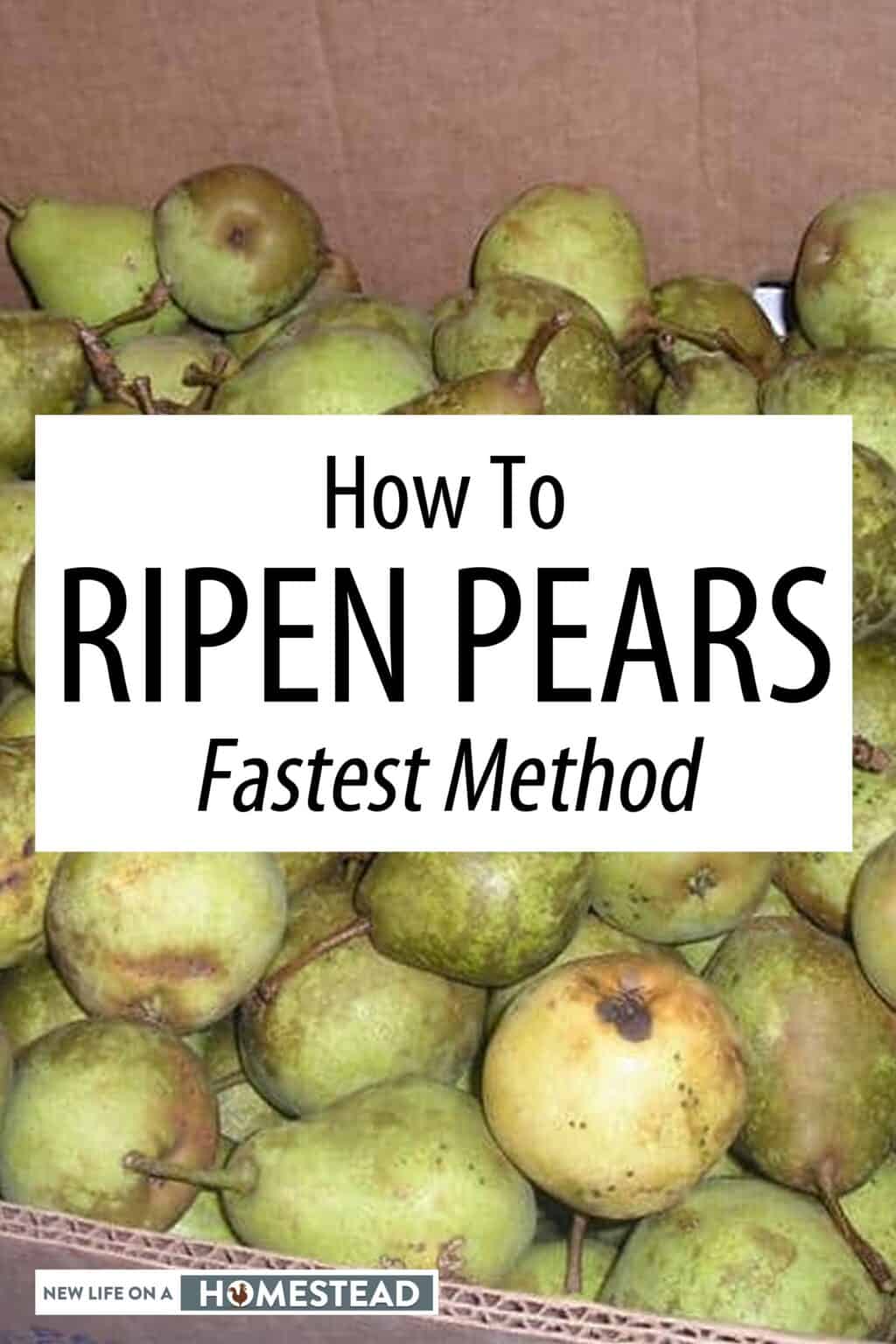How to Check for Readiness: Identifying the Perfect Pick
When it comes to determining if a pear is ready to be picked, there are several physical and visual cues to check for. One of the most obvious signs is the color of the fruit. A ripe pear will typically have a uniform color, depending on the variety, and may develop a slight yellow or red tint. However, be aware that some pear varieties, like the Bartlett, may not change color significantly as they ripen.
Softness is another key indicator of ripeness. A ripe pear will be slightly soft to the touch, but still firm enough to hold its shape. Avoid squeezing the fruit too hard, as this can damage the delicate skin and cause bruising. Instead, gently press the skin around the stem, and if it yields to pressure, it’s likely ready to be picked.
The stem attachment is also an important factor to consider. A ripe pear will come off the tree easily, leaving a small piece of stem attached to the fruit. If the stem is difficult to remove, the pear may not be fully ripe. Additionally, check the neck of the pear, which is the area just below the stem. A ripe pear will have a slight indentation in this area, indicating that it’s ready to be picked.
When handling the fruit, it’s essential to be gentle to avoid damaging the skin or bruising the flesh. Use a soft, clean cloth to wipe away any dirt or debris, and avoid washing the fruit until you’re ready to use it. By following these simple steps, you can ensure that your pears are picked at the perfect time and enjoy a delicious, ripe snack.
The Science of Ripening: Ethylene Production and Fruit Maturation
Ripening is a complex process that involves a series of biochemical reactions that occur within the fruit. One of the key players in this process is ethylene, a naturally occurring plant hormone that promotes fruit maturation. Ethylene production is triggered by a variety of factors, including the breakdown of cell walls, the activation of enzymes, and the production of other hormones.
As pears ripen, they produce more ethylene, which in turn stimulates a series of reactions that help to break down the cell walls and soften the fruit. This process is accompanied by a series of physical changes, including a decrease in acidity, an increase in sugar content, and a change in the fruit’s color and texture.
Understanding the role of ethylene in the ripening process can help you to better manage the ripening of your pears. For example, you can use ethylene-producing fruits, such as apples or bananas, to stimulate the ripening process. You can also use ethylene-absorbing materials, such as silica gel or activated carbon, to slow down the ripening process.
In addition to ethylene, other factors such as temperature, humidity, and light exposure can also impact the ripening process. For example, pears that are stored at a cooler temperature will ripen more slowly than those that are stored at room temperature. Similarly, pears that are exposed to high levels of humidity will ripen more quickly than those that are stored in a dry environment.
By understanding the science behind the ripening process, you can take steps to optimize the conditions for ripening your pears. This can help to ensure that your pears are perfectly ripe and ready to eat, whether you’re enjoying them on their own or using them in a recipe.
Methods for Ripening Pears Off the Tree
Once you’ve picked your pears, there are several methods you can use to ripen them off the tree. One of the most effective methods is to use ethylene-producing fruits, such as apples or bananas, to stimulate the ripening process. Simply place the pears in a bag with the ethylene-producing fruit and seal it. The ethylene gas produced by the fruit will help to ripen the pears.
Another method is to use paper bags to ripen pears. Simply place the pears in a paper bag and seal it. The bag will trap the ethylene gas produced by the pears, helping to ripen them more quickly. You can also add a banana or apple to the bag to increase the amount of ethylene gas present.
Controlled atmosphere storage is another method that can be used to ripen pears off the tree. This involves storing the pears in a sealed container with a controlled atmosphere that is high in ethylene gas. This method can be more expensive than the others, but it can be effective for ripening large quantities of pears.
Regardless of the method you choose, it’s essential to monitor the pears regularly to ensure they are ripening properly. Check the pears daily for signs of ripeness, such as a sweet aroma, a slight softening of the skin, and a change in color. If the pears are not ripening as quickly as you would like, you can try moving them to a warmer location or using a different ripening method.
By using one of these methods, you can successfully ripen your pears off the tree and enjoy them at their best. Remember to always handle the pears gently to avoid bruising or damaging them, and to store them in a cool, dry place to maintain their quality and freshness.
Optimizing Storage Conditions for Ripening Pears
Once you’ve picked your pears, it’s essential to store them in a way that promotes ripening. The ideal storage conditions for ripening pears include a temperature between 65°F and 75°F (18°C and 24°C), high humidity, and minimal light exposure. You can achieve these conditions by storing the pears in a cool, dark place, such as a basement or a cupboard.
Temperature is a critical factor in ripening pears. If the temperature is too high, the pears will ripen too quickly, while temperatures that are too low will slow down the ripening process. You can use a thermometer to monitor the temperature and adjust it as needed.
Humidity is also essential for ripening pears. You can increase the humidity around the pears by covering them with a damp cloth or placing them in a sealed container with a damp paper towel. This will help to maintain a consistent level of moisture and promote ripening.
Light exposure can also impact the ripening process. Pears that are exposed to direct sunlight or bright artificial light may ripen more quickly, but they may also become overripe or develop off-flavors. To avoid this, store the pears in a dark place or use a light-blocking material to filter out any direct light.
Monitoring and adjusting the storage conditions is crucial to ensure that your pears ripen properly. Check the pears regularly for signs of ripeness, such as a sweet aroma, a slight softening of the skin, and a change in color. If the pears are not ripening as quickly as you would like, you can try adjusting the temperature, humidity, or light exposure to optimize the conditions.
By optimizing the storage conditions, you can help to ensure that your pears ripen properly and maintain their quality and freshness. This will enable you to enjoy your pears at their best, whether you’re eating them fresh or using them in a recipe.
Common Mistakes to Avoid When Ripening Pears
Ripening pears can be a delicate process, and there are several common mistakes to avoid in order to achieve optimal results. One of the most common mistakes is over-handling the fruit, which can cause bruising and damage to the skin. This can lead to a decrease in the quality and freshness of the pears.
Inadequate storage is another common mistake that can impact the ripening process. Pears that are stored in a warm or dry environment may not ripen properly, while those that are stored in a cool or humid environment may ripen too quickly. It’s essential to store pears in a consistent environment that is optimized for ripening.
Incorrect temperature control is also a common mistake that can impact the ripening process. Pears that are stored at too high a temperature may ripen too quickly, while those that are stored at too low a temperature may not ripen at all. It’s essential to monitor the temperature and adjust it as needed to optimize the ripening process.
Another common mistake is not monitoring the pears regularly for signs of ripeness. Pears that are not checked regularly may become overripe or develop off-flavors, which can impact their quality and freshness. It’s essential to check the pears regularly and adjust the storage conditions as needed to optimize the ripening process.
By avoiding these common mistakes, you can help to ensure that your pears ripen properly and maintain their quality and freshness. This will enable you to enjoy your pears at their best, whether you’re eating them fresh or using them in a recipe.
Troubleshooting tips for addressing these issues include adjusting the storage conditions, monitoring the pears regularly, and handling the fruit gently to avoid damage. By following these tips, you can help to optimize the ripening process and achieve the best possible results.
Variety-Specific Tips for Ripening Pears
While the general principles of ripening pears apply to most varieties, some pears have unique characteristics or requirements that can impact the ripening process. For example, Bartlett pears are known to be more sensitive to temperature and humidity than other varieties, and may require more precise storage conditions to ripen properly.
Anjou pears, on the other hand, are known for their sweet flavor and tender texture, but can be more prone to over-ripening if not stored properly. To ripen Anjou pears, it’s essential to store them in a cool, dry place and check on them regularly to avoid over-ripening.
Bosc pears are another popular variety that can be more challenging to ripen. They have a thicker skin than other pears, which can make them more resistant to ripening. However, with the right storage conditions and handling, Bosc pears can be ripened to perfection.
Other pear varieties, such as Red Anjou and Green Anjou, may have different ripening requirements than the varieties mentioned above. It’s essential to research the specific needs of your pear variety to ensure that you’re providing the best conditions for ripening.
By understanding the unique characteristics and requirements of your pear variety, you can optimize the ripening process and enjoy perfectly ripe pears. Whether you’re growing your own pears or purchasing them from a store, variety-specific tips can help you get the most out of your fruit.
Enjoying Your Perfectly Ripe Pears: Storage and Handling Tips
Once your pears are perfectly ripe, it’s essential to store and handle them properly to maintain their quality and freshness. One of the most important things to remember is to store ripe pears in a cool, dry place, away from direct sunlight and heat sources.
When storing ripe pears, it’s also important to keep them away from other fruits and vegetables that may be producing ethylene gas, as this can cause the pears to over-ripen. You can store ripe pears in a paper bag or a breathable container, such as a mesh bag or a ventilated plastic bag.
When handling ripe pears, it’s essential to be gentle to avoid bruising or damaging the fruit. You can wash the pears gently with cool water to remove any dirt or debris, but avoid washing them too vigorously, as this can cause damage to the skin.
Ripe pears can be enjoyed in a variety of ways, including eating them fresh, using them in salads, or incorporating them into recipes. Some popular ways to enjoy ripe pears include making pear sauce, pear butter, or pear jam. You can also use ripe pears in baked goods, such as pear cakes, pear muffins, or pear bread.
In addition to their culinary uses, ripe pears can also be used in decorative arrangements or as a centerpiece for a fruit platter. Their sweet aroma and attractive appearance make them a popular choice for fruit arrangements and displays.
By following these storage and handling tips, you can enjoy your perfectly ripe pears for a longer period and make the most of their flavor and nutritional benefits.
Enjoying Your Perfectly Ripe Pears: Storage and Handling Tips
Once your pears are perfectly ripe, it’s essential to store and handle them properly to maintain their quality and freshness. One of the most important things to remember is to store ripe pears in a cool, dry place, away from direct sunlight and heat sources.
When storing ripe pears, it’s also important to keep them away from other fruits and vegetables that may be producing ethylene gas, as this can cause the pears to over-ripen. You can store ripe pears in a paper bag or a breathable container, such as a mesh bag or a ventilated plastic bag.
When handling ripe pears, it’s essential to be gentle to avoid bruising or damaging the fruit. You can wash the pears gently with cool water to remove any dirt or debris, but avoid washing them too vigorously, as this can cause damage to the skin.
Ripe pears can be enjoyed in a variety of ways, including eating them fresh, using them in salads, or incorporating them into recipes. Some popular ways to enjoy ripe pears include making pear sauce, pear butter, or pear jam. You can also use ripe pears in baked goods, such as pear cakes, pear muffins, or pear bread.
In addition to their culinary uses, ripe pears can also be used in decorative arrangements or as a centerpiece for a fruit platter. Their sweet aroma and attractive appearance make them a popular choice for fruit arrangements and displays.
By following these storage and handling tips, you can enjoy your perfectly ripe pears for a longer period and make the most of their flavor and nutritional benefits.
Some popular recipes that feature ripe pears include:
- Pear and Brie Salad: A simple salad made with ripe pears, brie cheese, and mixed greens.
- Pear and Chocolate Tart: A sweet tart made with ripe pears, chocolate, and a flaky crust.
- Pear and Ginger Jam: A sweet and spicy jam made with ripe pears, ginger, and sugar.
These are just a few examples of the many ways you can enjoy ripe pears. With their sweet flavor and versatility, the possibilities are endless!








